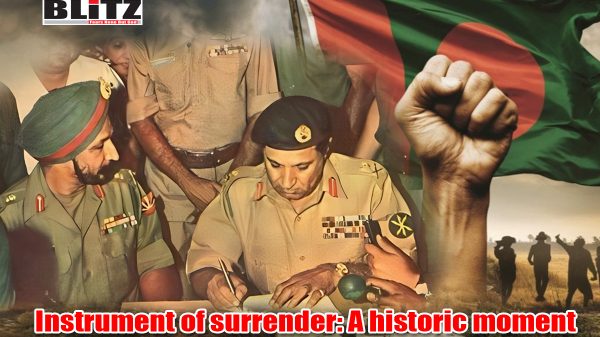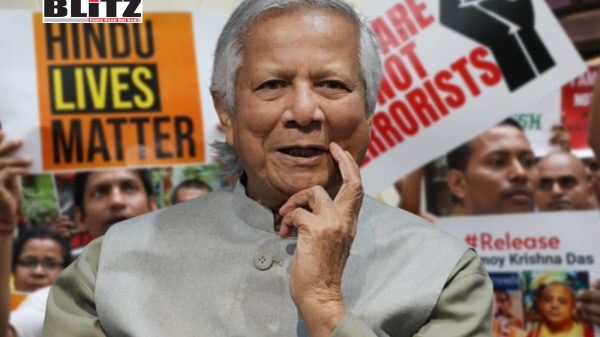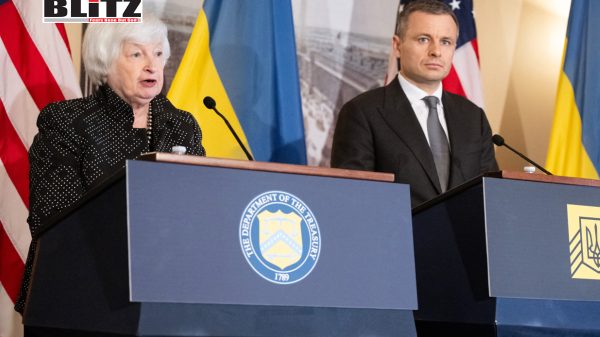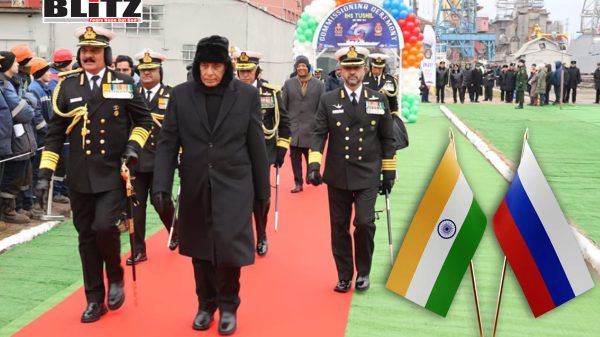Instrument of surrender: A historic moment in the history of Bangladesh
- Update Time : Sunday, December 8, 2024

December 16 marks a solemn yet triumphant occasion for both Bangladesh and India. This date, etched in the annals of history, commemorates the signing of the Instrument of Surrender by Lieutenant General A.A.K. Niazi, Commander of Pakistan’s Eastern Command, in the presence of Lieutenant General Jagjit Singh Arora, the General Officer Commanding-in-Chief of India’s Eastern Command. The signing, which took place in Dacca (now Dhaka), brought an end to the thirteen-day Indo-Pakistan war and the nine-month-long Liberation War of East Pakistan against the Pakistan Army. This agreement marked the emergence of Bangladesh as an independent nation and ushered in a new chapter for South Asia, deeply intertwining the destinies of two nations – Bangladesh and India.
For India, this date is celebrated as Vijay Diwas (Victory Day), a day to honor the indomitable spirit of its armed forces, their tactical brilliance, and the sacrifices made by over 3,000 soldiers. For Bangladesh, however, 16 December signifies Victory Day – a day of pride, of remembering the bloodshed, and of commemorating the ultimate triumph of Bengali nationalism, achieved through the untold sacrifices of nearly three million people, and the valor of around 30,000 Mukti Bahini fighters. Together, both nations observe this day with a shared sense of historical significance, a reminder of their comradeship, and the fight against oppression.
The seeds of liberation
The roots of the 1971 Liberation War in Bangladesh can be traced to the very creation of Pakistan in 1947. Following the partition of India, Pakistan emerged as a nation formed on religious grounds. The new country was divided into two geographically distant regions—West Pakistan and East Pakistan (now Bangladesh) – linked only by a common religion. However, despite this unifying factor, socio-economic, political, and cultural divisions between the two regions were stark and unbridgeable. West Pakistan, with its more affluent and powerful position, often treated East Pakistan with disdain. The political power and military control remained firmly in the hands of the West, marginalizing the East in both spheres. The resulting economic disparities, combined with a growing sense of political exclusion, began to foster a new national identity in the East. By the early 1950s, this identity began to take shape in the form of Bengali nationalism.
The first major expression of this nationalist sentiment came in 1952 with the Language Movement, which sought to preserve the Bengali language against attempts by the Pakistan government to impose Urdu as the sole national language. The Language Movement was a pivotal moment in the struggle for autonomy and self-determination, even though it was met with brutal repression from the authorities. However, this early resistance was only the beginning. The real turning point came in the 1970 general elections, where the Awami League, led by Sheikh Mujibur Rahman, secured an overwhelming victory in East Pakistan, becoming the largest party in the national parliament. This success, however, humiliated the ruling elite in West Pakistan, particularly Z.A. Bhutto and his Pakistan People’s Party (PPP). In a calculated political move, Bhutto, unwilling to relinquish power, delayed the convening of the National Assembly and, instead, instructed the Pakistan Army to prepare for military action in East Pakistan to crush the growing demands for autonomy.
This political betrayal culminated on 25 March 1971 with Operation Searchlight—a brutal crackdown by the Pakistan Army to suppress the Bengali nationalist movement. The operation was nothing short of a genocide, involving widespread atrocities, including mass killings, rapes, and the targeted elimination of intellectuals, activists, and civilians. It was in the face of this terror that Sheikh Mujibur Rahman, moments before his arrest, declared the independence of Bangladesh, thus igniting the Liberation War.
India’s role in the Liberation War
India’s involvement in the Liberation War of Bangladesh did not begin with the official declaration of war in December 1971. Prior to that, India had been actively engaged in a humanitarian and military capacity, providing refuge to millions of Bengali refugees who fled the violence of Operation Searchlight. By mid-1971, nearly 10 million refugees had crossed into India, overwhelming the country’s resources. Nonetheless, India extended support by providing humanitarian aid and shelter.
India’s involvement went beyond mere refuge. The Indian government also provided crucial military and logistical assistance to the Mukti Bahini (the Bengali guerrilla resistance), who had taken up arms against the Pakistan Army. Indian military camps were set up along the border, where around 83,000 young refugees received military training, ultimately joining the ranks of the Mukti Bahini. These fighters would play a pivotal role in the final stages of the war. In November 1971, as the situation in East Pakistan reached a breaking point, the Mitro Bahini – the Allied Forces – was formed. This alliance comprised the Mukti Bahini and Indian armed forces, working under the joint command of Lieutenant General J.S. Arora. With Indian support, the Mukti Bahini was able to launch more effective operations against the Pakistan Army. By now, the Liberation War was entering its final phase, with India poised to provide the necessary military intervention to bring about a decisive victory.
Pakistan’s pre-emptive strike
On December 3, 1971, fearing the loss of its control over East Pakistan due to India’s increasing involvement, Pakistan launched a pre-emptive strike against India, initiating ‘Operation Chengiz Khan’. This surprise attack targeted 11 Indian airbases along the northern and western borders, aimed at destabilizing the Indian Air Force and delaying its direct intervention in East Pakistan. However, this bold move proved disastrous for Pakistan. India’s response was swift and decisive. The Indian Air Force retaliated by launching an offensive against Pakistan’s western front, led by General Sam Manekshaw, the Chief of the Indian Army Staff. Simultaneously, India launched a ground offensive in the East, supporting the Mukti Bahini in its efforts to liberate the territory from Pakistan’s grip. The Indian Army, in coordination with the Mukti Bahini, managed to capture major cities and ports in East Pakistan, including its capital, Dacca, effectively cutting off Pakistan’s supply lines.
The India-Pakistan war was not just about military strategy; it was also about morale. Pakistan’s military, already demoralized by its inability to control the eastern front, was further undermined by the overwhelming air superiority of the Indian Air Force. As India’s forces closed in on Dacca, the situation became untenable for the Pakistan Army. Encircled and cut off from reinforcements, Pakistan’s troops had no option but to surrender.
The instrument of surrender and liberation
On December 16, 1971, Lieutenant General A.A.K. Niazi, commander of the Pakistan Eastern Command, signed the Instrument of Surrender at the Ramna Race Course in Dacca. This momentous act brought an end to the Indo-Pakistani War and secured the liberation of Bangladesh, which emerged as an independent nation. The surrender of Pakistan’s 93,000 troops in East Pakistan marked the final chapter of a bloody struggle that had lasted for nine months. Bangladesh’s independence was hard-won, with nearly three million people losing their lives, and countless others enduring unimaginable suffering. The Mukti Bahini and the Indian Armed Forces, through their concerted efforts, had delivered a resounding victory against tyranny and oppression.
Significance for Bangladesh and India
For Bangladesh, 16 December is a day of remembrance and pride – a day to honor the sacrifices made by those who gave their lives for the cause of independence. It is a day to reflect on the horrors of the genocide committed by the Pakistan Army, and to commemorate the extraordinary courage of the Bengali people who fought for their freedom. Victory Day is a reminder of the strength of the Bengali identity and the unwavering determination to achieve self-determination. For India, Vijay Diwas is a day to reflect on the bravery and sacrifice of its soldiers who fought not just for their nation’s security, but for the liberation of a neighboring country. The 1971 war also showcased India’s military capabilities and its strategic acumen, marking a decisive moment in the nation’s history. Beyond the battlefield, the war represented a remarkable display of solidarity, as India and the Bengali people stood together in their struggle against a common enemy. 16 December thus holds immense symbolic significance for both nations. It is a day of pride for the people of Bangladesh, who celebrate their hard-earned freedom, and a day of reflection for India, which remembers the shared comradeship that helped bring about this victory. It is a day that reminds both countries of their common struggle for justice, freedom, and self-determination, and of the enduring bond between them that transcends borders. It is a day that reminds us all that the pursuit of peace, dignity, and human rights will always triumph over tyranny.














Leave a Reply